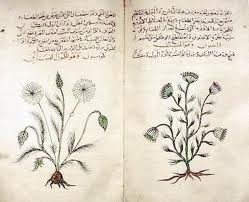A Community for Curious Minds who love History, its Odd Stories, and Good Reads
A Community for Curious Minds who love History, its Odd Stories, and Good Reads
By Holly Tucker
 Chanel No. 5 is the world’s most famous perfume, and for nearly ninety years it has been one of the bestselling. In fact, it’s been the bestselling scent in modern history. But perfume has been around for several millennia. And in the first of perfume, there’s only one fragrance that has ever rivaled Chanel No. 5 for international sales and celebrity, although it’s a scent the history of which few people now remember. (But perfume enthusiasts will recognize its name as evoking a general category of fragrance.)
Chanel No. 5 is the world’s most famous perfume, and for nearly ninety years it has been one of the bestselling. In fact, it’s been the bestselling scent in modern history. But perfume has been around for several millennia. And in the first of perfume, there’s only one fragrance that has ever rivaled Chanel No. 5 for international sales and celebrity, although it’s a scent the history of which few people now remember. (But perfume enthusiasts will recognize its name as evoking a general category of fragrance.)